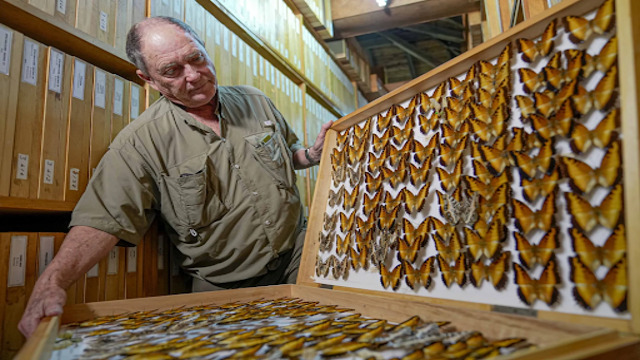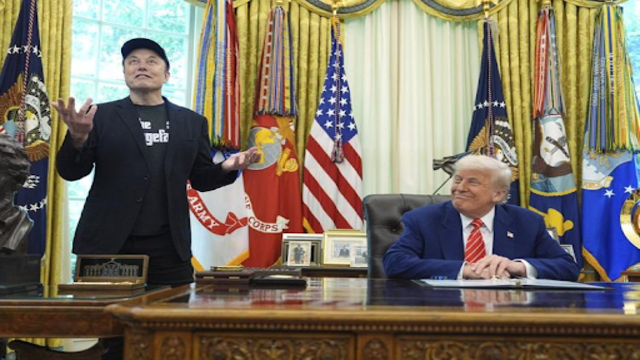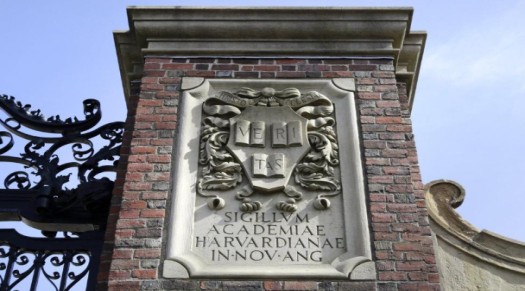
Steve Collins, a butterfly enthusiast and founder of the African Butterfly Research Institute, is seen holding a box filled with butterflies in Nairobi, Kenya, on Monday, December 9, 2024. AP Photo
A childhood interest in butterflies has grown into what may be the largest butterfly collection in Africa. Steve Collins, now 74, began his passion for collecting butterflies at the age of 5, and over six decades later, his collection has reached an astounding 4.2 million specimens. These butterflies, representing hundreds of species, are stored in a well-kept environment at Collins’ property in a suburb near Kenya’s capital, Nairobi.
Collins' journey began when his parents encouraged him to explore nature. After visiting the Congo, they received a butterfly trapping net from friends, and Collins was soon collecting butterflies. By 15, he was traveling to other countries, such as Nigeria, to expand his studies on butterflies.
In his 20-year career as an agronomist, Collins spent his spare time researching butterflies. In 1997, he founded the African Butterfly Research Institute, a project dedicated to preserving and studying the species. Collins’ collection, which includes butterflies from across the continent, is housed on his 1.5-acre property, surrounded by a diverse range of trees and flowering plants that attract hundreds of butterflies.
Though his collection was once open to the public, Collins currently keeps it private. The collection consists of 1.2 million butterflies carefully pinned in frames, with an additional 3 million specimens stored in envelopes. To preserve the specimens, Collins ensures they are kept in dark spaces to prevent damage from insects, parasites, and other pests. He also applies insecticides annually to maintain the collection’s integrity.
Julian Bayliss, an ecologist and long-time collaborator of Collins, emphasized the importance of the collection. He pointed out that much of Africa’s butterfly habitats are being destroyed due to climate change, including floods and droughts. Bayliss suggested that digitizing the collection could allow access to researchers worldwide, ensuring its protection and use for future generations.
Collins' collection offers vital data about environmental changes over time, said Scott Miller, an entomologist at the Smithsonian Institution. Miller explained that physical specimens like Collins' provide valuable information that can be revisited with new technologies and research methods. This collection, which spans over six decades, may hold essential clues about Africa's changing ecosystems.
As Collins grows older, he faces challenges maintaining his research. He expressed concern that, without support, his work could be at risk. One of his most prized butterflies is worth $8,000, but Collins keeps it hidden for fear of theft. The costs of running his institute are high, and he estimates his entire collection and assets are worth about $8 million. He is now seeking to find a secure institution or individual to take over the collection, ensuring its continued preservation and study.
“I’ve dedicated decades to this hobby,” Collins said. “I can't put a price on what I’ve done, but I want to make sure it’s preserved when I’m no longer around.”















